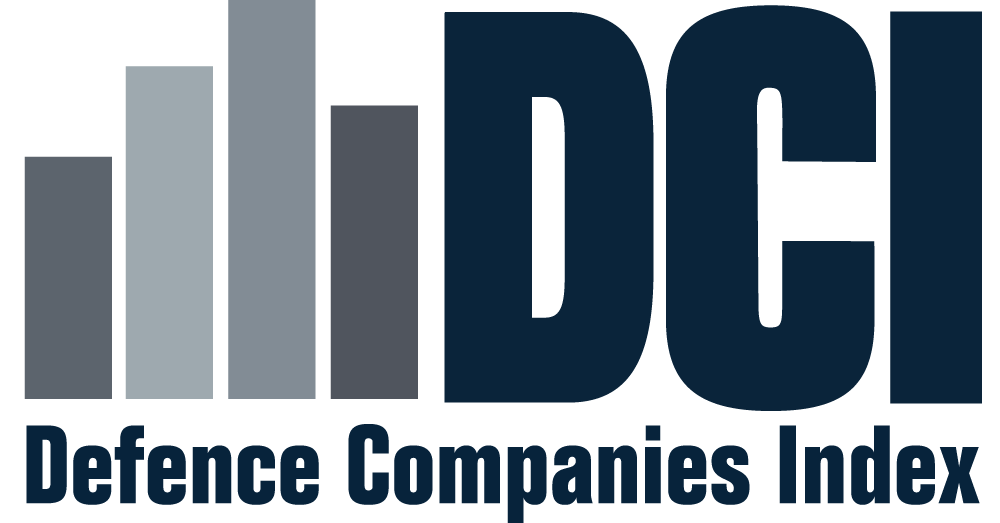This risk category focuses on third parties and consists of indicators relating to agents and joint ventures. The use of agents and intermediaries in defence procurement is widely recognised as one of the most significant and pervasive bribery and corruption risks in the global defence sector; while joint ventures can pose specific risks especially when established with high-risk partners or in high-risk countries. This risk category contains 10 indicators, covering public disclosures of specific topics such as policy on the use of agents; due diligence on agents and intermediaries, including beneficial ownership; ethical incentives for agents; transparency of contracted agents; high-level data on agent allegations and ethical investigations; due diligence on joint ventures; and anti-bribery and corruption standards in joint ventures.
For more information on this risk category, see our summary page on The 10 Key Risk Categories or to view the specific criteria see the DCI Indicators.
In this assessment, ‘agents’ are defined as individuals or entities authorised to act for, or on behalf of, a company to further its business interests, for example in sales or marketing, and in, or with, a foreign country or foreign entity. The terms agent, advisor and broker are often used interchangeably, but the authority to act on behalf of the company’s interests distinguishes this type of third party from other intermediaries, such as consultants and lobbyists.
Each company’s overall score is broken down into two question categories – those measuring ‘policy’ and those measuring ‘transparency’.
‘Policy’ indicators relate to the standard and amount of publicly available information on the company’s policies and procedures that aim to reduce the risk of corruption. There are 37 indicators that fall into this category, plus three that include both ‘policy’ and ‘transparency’ elements. For more information, see the DCI Methods Paper.
Each company’s overall score is broken down into two question categories – those measuring ‘policy’ and those measuring ‘transparency’.
‘Transparency’ indicators relate to the public provision of data that can help mitigate corruption risk in the sector overall. There are 16 indicators that fall into this category, plus three that include both ‘policy’ and ‘transparency’ elements. For more information, see the DCI Methods Paper.
For each risk category, companies receive their score in the form of raw ‘points’ and an equivalent score out of 100. Providing a score out of 100 helps improve comparability across categories and companies.
Title
Guidance
Rubric
7. Agents, Intermediaries and Joint Ventures
Score
65/100
Points
13/20
Compare scores by company
| AAR Corporation |
| Abu Dhabi Shipbuilding |
| Accenture PLC |
| AECOM |
| Aerojet Rocketdyne |
| Airbus Group |
| Almaz-Antey |
| Arab Organization for Industrialization (AOI) |
| Arsenal JSCo. |
| Aselsan A.Ş. |
| Austal |
| Aviation Industry Corporation of China (AVIC) |
| Babcock International Group |
| BAE Systems PLC |
| Ball Aerospace & Technologies Corporation |
| Battelle Memorial Institute |
| Bechtel Corporation |
| BelTechExport Company JSC |
| Bharat Dynamics |
| Bharat Electronics |
| Boeing |
| Booz Allen Hamilton Inc. |
| CACI International Inc. |
| CAE Inc. |
| CEA Technologies |
| Chemring Group PLC |
| China North Industries Group Corporation (NORINCO) |
| China State Shipbuilding Corporation |
| Cobham Ltd. |
| Cubic Corporation |
| Curtiss-Wright Corporation |
| Daewoo Shipbuilding & Marine Engineering |
| Damen Schelde Naval Shipbuilding |
| Dassault Aviation |
| Day & Zimmermann |
| Denel SOC |
| Diehl Stiftung & Co. KG |
| DynCorp International |
| Elbit Systems |
| Embraer S.A |
| Excalibur Army |
| Fincantieri S.p.A |
| Fluor Corporation |
| Fujitsu Ltd. |
| GE Aviation |
| General Atomics |
| General Dynamics Corporation |
| GKN Aerospace |
| Glock |
| Hanwha Aerospace |
| Hewlett-Packard Enterprise Company |
| High Precision Systems |
| Hindustan Aeronautics Ltd. |
| Honeywell International |
| Huntington Ingalls Industries, Inc. |
| Hyundai Rotem Company |
| IHI Corporation |
| IMI Systems Ltd. |
| Indian Ordnance Factories |
| Indra Sistemas S.A. |
| Israel Aerospace Industries (IAI) |
| Japan Marine United Corporation |
| Kawasaki Heavy Industries Ltd. |
| KBR Inc. |
| King Abdullah II Design and Development Bureau |
| Komatsu Ltd. |
| Kongsberg Gruppen ASA |
| Korea Aerospace Industries Ltd. |
| Krauss-Maffei Wegmann (KMW) |
| L3 Harris Technologies Inc. |
| Leidos Inc. |
| Leonardo S.p.A |
| LIG Nex1 Co. |
| Lockheed Martin Corporation |
| ManTech International Corporation |
| Massachussetts Institute of Technology (MIT) |
| MBDA |
| Meggitt PLC |
| MITRE Corporation |
| Mitsubishi Electric Corporation |
| Mitsubishi Heavy Industries |
| Moog Inc. |
| Nammo AS |
| Naval Group |
| Navantia S.A |
| NEC Corporation |
| Nexter Group |
| Northrop Grumman Corporation |
| OGMA – Indústria Aeronáutica de Portugal SA |
| Oki Electric Industry |
| Oshkosh Corporation |
| Patria Oyj |
| Perspecta |
| Polish Defence Holding |
| Poongsan Corporation |
| PT Dirgantara Indonesia (Indonesian Aerospace) |
| QinetiQ Group |
| Rafael Advanced Defense Systems Ltd. |
| Raytheon Technologies |
| Rheinmetall A.G |
| Roketsan A.Ş. |
| Rolls Royce PLC |
| Rostec State Corporation JSC |
| RTI Systems Inc. |
| RUAG Holding AG |
| Russian Helicopters JSC |
| Saab AB |
| Safran S.A |
| Science Applications International Corporation (SAIC) |
| Serco Group PLC |
| ST Engineering |
| STM Savunma Teknolojileri Muhendislik ve Ticaret A.S. |
| Tactical Missiles Corporation JSC |
| Tashkent Mechanical Plant (TMZ) |
| Tatra Trucks A.S. |
| Telephonics Corporation |
| Terma A/S |
| Textron Inc. |
| Thales Group |
| The Aerospace Corporation |
| ThyssenKrupp AG |
| Toshiba Infrastructure Systems & Solutions Corporation |
| Triumph Group Inc. |
| Turkish Aerospace Industries Inc. |
| Ukroboronprom |
| Ultra Electronics Holdings PLC |
| United Aircraft Corporation PJSC |
| United Engine Corporation JSC |
| United Instrument Manufacturing Corporation |
| United Shipbuilding Corporation JSC |
| Uralvagonzavod JSC |
| Vectrus Inc. |
| ViaSat Inc. |
| Zastava Arms |


